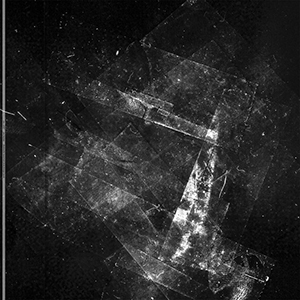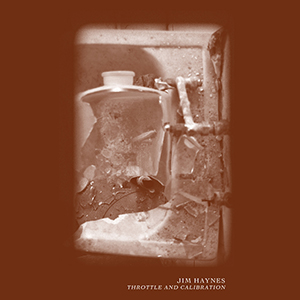 For his two most recent (near simultaneous) releases, Jim Haynes has scaled back his audial representation of decay to something a bit colder and more intentionally off-putting. Both albums are largely based on field recordings taken from a residency in Estonia, and capturing the detritus of Soviet era electronics (and some still active) via shortwave and then processing the results. The final products may be somewhat sparser than his other works, but no less fascinating, and with an additional menacing edge.
For his two most recent (near simultaneous) releases, Jim Haynes has scaled back his audial representation of decay to something a bit colder and more intentionally off-putting. Both albums are largely based on field recordings taken from a residency in Estonia, and capturing the detritus of Soviet era electronics (and some still active) via shortwave and then processing the results. The final products may be somewhat sparser than his other works, but no less fascinating, and with an additional menacing edge.
On the first side of the Flammable Materials record, Haynes presents three pieces that are perhaps the most inline with his previous works.Treated static and radio interference is unsurprisingly a recurring theme of the record, but are especially prevalent on the opening piece "Of Blast and Bleach".Here Haynes mixes it with some sort of idling motor sound that is fittingly inconsistent.Elements of the static and noise are shaped into some sort of rhythmic structure that contrasts the abstract remainder of the composition very effectively.
Haynes takes on a more noise-centric approach on "Nyet".First a lava-like wall of harshness with the occasional tone slipping through, it is quickly broken back down and built back up, with an emphasis on shifting filters obscuring the low register part of the spectrum.For "E. Kohver" he takes on the opposite approach to the structure and arrangement.This piece is mostly a heavy, imposing drone with metallic tinged machinery noises that never goes full on dissonant, but stays sinister.At times the shortwave static is molded into that crackling texture-like sound that Haynes does so well, but the whole piece is very menacing and dynamic.
The other side of the album is dedicated to a single piece, "Electric Speech:Nadiya".A bit over 20 minutes, the composition is based solely on the radio broadcast of a woman speaking.Of course Haynes also makes use of the static and noise inherent to this type of recording, but in general he embraces minimalism more.The source material voice appears frequently, cut into fragments and phonemes that are anything but identifiable words, regardless of the language being spoken.As a whole it is a different style he is working in, with that singular focus and an impressive use of silence to contrast the more commanding moments.
samples:

Throttle and Calibration is from the same residency, and makes use of the Active Crossover series of audio archives by Simon Whetham in addition to Haynes’ own field recordings.Beyond just the sound from shortwave radios, these six pieces also utilize environments captured from shipping containers, decaying water towers, frigid winds, and other remnants of Cold War era decay.Since its conceptual focus is a bit broader, it is not surprising then that the sound is more reminiscent of his other recent releases."With Lead" is at first all dramatic crashes and weirdly wet sounding organic noises that are disturbing in their ambiguity before transitioning to a more understated rumble.
"Radiesthesia" is at first a foghorn like tone and abrasive mid-range distortion, but collapses again, interrupted with louder moments and backward voices to create a ominous ambience that is simultaneously disturbing and haunting, but is in league with what I have expected from his work.Haynes' standard practice of creating rot and decay is also on full display for "It Burns", which is a mass of abrupt noise blasts and violent crashes that becomes thinner and more brittle with time.
"Kirikulau" is a bit of a departure for him, however.The sound is more focused on lighter, ringing sounds and surging, unpleasant noises.It is not as dynamic as usual, but his balance of sustained tone and noisy outbursts is structurally reminiscent of Hermann Nitsch's compositions, with a more pronounced sense of rust and decay."What Do You Mean By That?" also stands out as more haunting and feedback-centric, with an overall seasick wobble to it, even though there is an unsettling sense of calm.Haynes adds layers and layers of distortion and noise throughout, pulling back to leave some open space and occasionally punctuating things with a metallic clang or thunderous rumble.
Both of Jim Haynes' newest works are exceptional additions to his already impressive body of work.The Throttle and Calibration tape is probably the less adventurous of the two, but is still a work deeply embedded in his style without being any sort of retread or replication of material he has already done.Flammable Materials from Foreign Lands benefits from its unique conceptual direction and focus, but really neither one is better than the other, and both are just excellent works from someone who has done an admirable job developing a career of sound art that always stands strong as utterly unique and fascinating.
samples:
Read More

